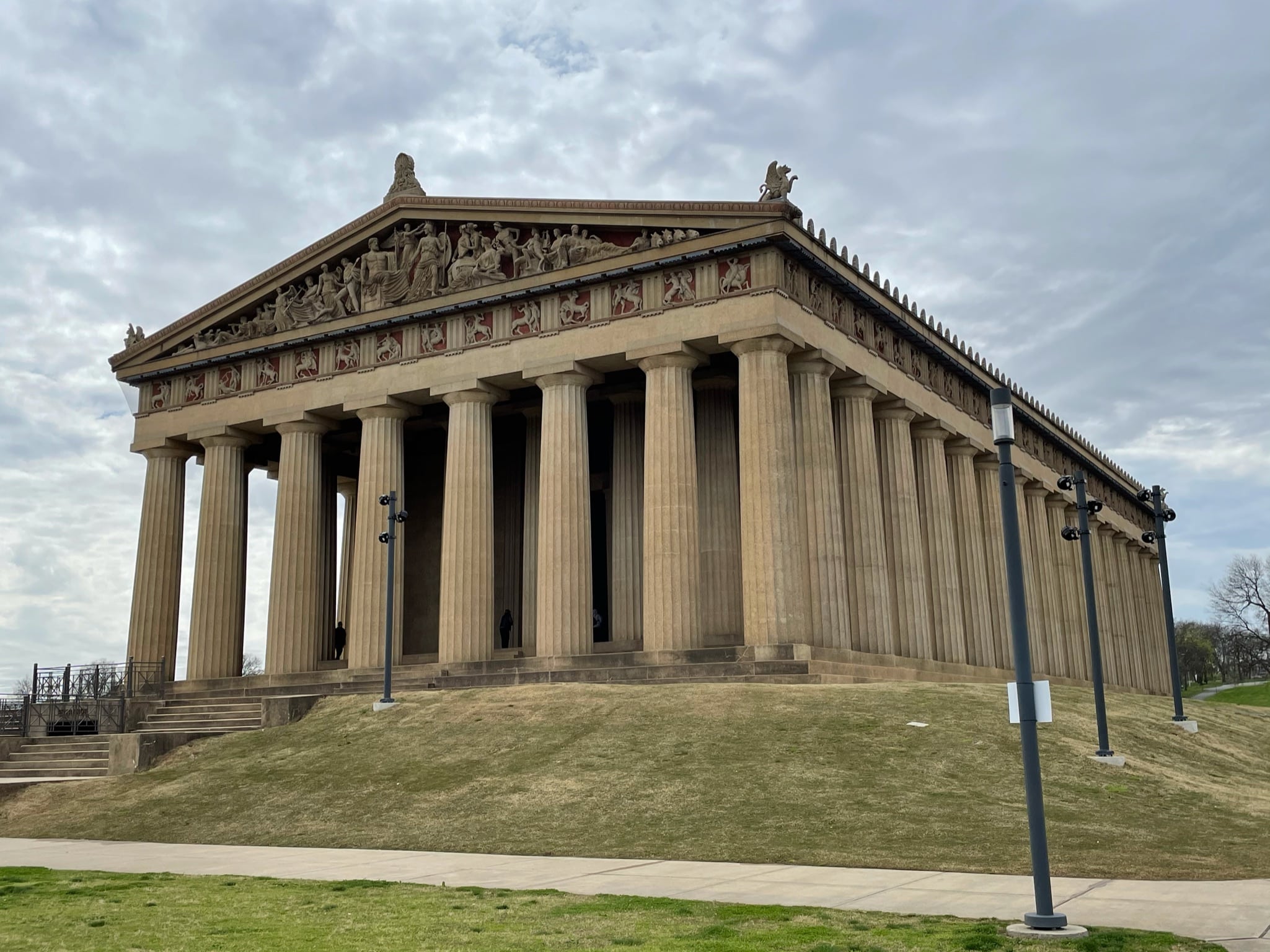Start with our video overview:
The greatest colossal statues of ancient Greece were crafted by Phidias, the renowned Athenian sculptor, painter, and architect who lived between 480 and 430 BCE. Although none of his original masterpieces survive, Roman copies and ancient descriptions allow us to reconstruct his style and appreciate the scale of his achievements.
Before producing his most famous works, Phidias had already gained recognition for sculptures commemorating the Battle of Marathon. To further honor the Greek victory, he crafted a colossal bronze statue of the goddess Athena, known as Athena Promachos (Athena who fights in the front line). Erected around 456 BCE, the statue stood nearly 30 feet (9 meters) tall atop the Acropolis, visible even from the sea – a powerful symbol of Athenian strength and divine protection. Though the statue itself has been lost, its stone base survives. The Athena Promachos stood for nearly a thousand years before being moved to Constantinople in 465 CE, where it was eventually destroyed during riots in 1203. Its image, however, endured through ancient coinage and the writings of the geographer Pausanias.
Phidias’ next monumental project was the Athena Parthenos, commissioned by Pericles in 447 BCE to celebrate Athens’ triumph over Persia. Housed inside the newly built Parthenon, the statue stood 40 feet (12 meters) tall and was constructed around a wooden frame covered with gold and ivory panels. It was among the most expensive artworks of its time, requiring nearly a ton of gold. The base depicted the birth of Pandora, surrounded by twenty gods. Athena wore the Aegis, a breastplate adorned with Medusa’s head, and her eyes were set with precious stones. In her left hand she held a shield and spear, and in her right, a figure of Nike, the goddess of victory.
Phidias’ masterpiece, however, was the Statue of Olympian Zeus, completed around 435 BCE at Olympia. Commissioned by the custodians of the Olympic Games, it was intended to surpass the grandeur of Athena Parthenos – and it did. Approximately 41 feet (12.4 meters) tall, the statue was considered one the Seven Wonders of the Ancient World. Zeus was portrayed seated on an elaborate throne, wearing a wreath of olive branches and a gilded robe decorated with carved animals and flowers. In his right hand he held a figure of Nike, and in his left, a scepter topped with an eagle. The throne was richly adorned with gold, ivory, gems, and painted figures, while even the footstool and base were carefully decorated.
Modern excavations at Olympia have uncovered Phidias’ workshop, which matches the dimensions of the temple’s inner chamber. It was here that he designed and assembled the monumental pieces of the Olympian Zeus, perfecting the colossal art form that defined his legacy.
Bibliography:
- Bulger, Monica. “The Temple of Zeus, Olympia.” Smarthistory. https://smarthistory.org/temple-of-zeus-olympia/
- Grout, James. “The Workshop of Phidias.” University of Chicago. https://penelope.uchicago.edu/encyclopaedia_romana/greece/hetairai/pheidias.html
- Hurwit, Jeffrey M. “Beautiful Evil: Pandora and the Athena Parthenos.” American Journal of Archaeology 99, no. 2 (1995): 171–86. https://www.jstor.org/stable/506338
- Lundgreen, Birte. “A Methodological Enquiry: The Great Bronze Athena by Pheidias.” The Journal of Hellenic Studies 117 (1997): 190–97. https://www.jstor.org/stable/632558
- Miller, Stella G. “A Miniature Athena Promachos.” Hesperia Supplements 20 (1982): 93–206. https://www.jstor.org/stable/1353950
- “Statue of Athena Parthenos (the Virgin Goddess).” Museum of Fine Arts Boston.” https://collections.mfa.org/objects/150203/statue-of-athena-parthenos-the-virgin-goddess
This content is brought to you by The American Institute for Roman Culture, a 501(C)3 US Non-Profit Organization.
Please support our mission to aid learning and understanding of ancient Rome through free-to-access content by donating today.
Cite This Page
Cite this page as: Darius Arya, The American Institute for Roman Culture, “Colossal Statues of Ancient Greece,” Ancient Rome Live. Last modified 10/26/2025. https://ancientromelive.org/colossal-statues-of-ancient-greece
License
Created by The American Institute of Roman Culture, published on 10/26/2025 under the following license: Creative Commons: Attribution-NonCommercial-ShareAlike. This license lets others remix, tweak, and build upon this content non-commercially, as long as they credit the author and license their new creations under the identical terms. Please note that content linked from this page may have different licensing terms.




